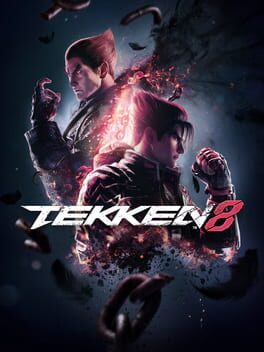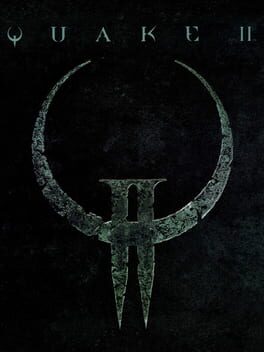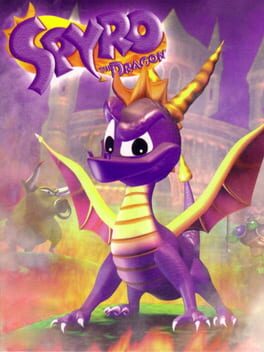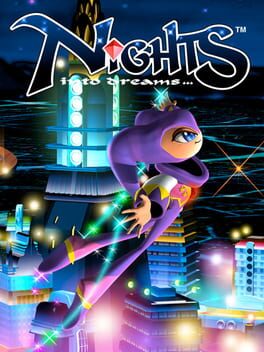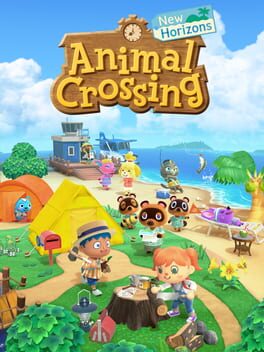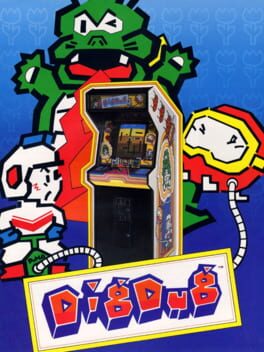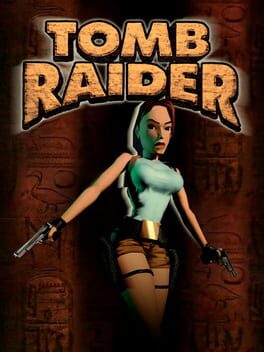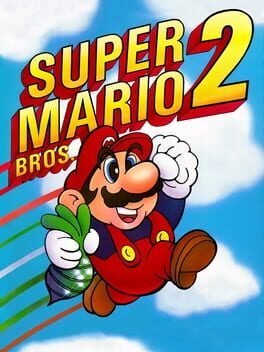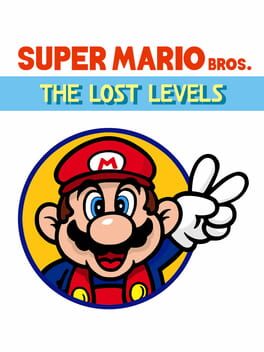Jaserk
30 reviews liked by Jaserk
Tekken 8
2024
Familia Mishma
El acantilado familiar
Yo te arrojo a ti
Luego tú a mí
Yo te arrojo a ti
Luego tú a mí (Miren eso!)
Luego tú a mí
Kasuya Mishma
Compréndeme
Es mi deber, te tengo que fortaleser
Se me ha ocurrido una forma espesial
¡Tirarte de lo alto del acantilado familiar!
Familia Mishma
El acantilado familiar
Yo te arrojo a ti
Luego tú a mí
Yo te arrojo a ti
Luego tú a mí (Miren eso!)
Luego tú a mí
Al final del Tekken 7 me tiraste a un volcán
Y con eso en el 8 ya no voy a estar
Me pone triste, hijo mío, y voy a llorar
Con esa solución con la que fuiste a dar
Para a tu viejo acabar
Olvidaste a los Mishima
Y su legado morirá
Espero que mi nieto Jin lo vuelva a retomar
Por qué no me arrojaste del acantilado familiar?
Familia Mishma
El acantilado familiar
Yo te arrojo a ti
Luego tú a mí
Yo te arrojo a ti
Luego tú a mí (Miren eso!)
Luego tú a mí
El acantilado familiar
Yo te arrojo a ti
Luego tú a mí
Yo te arrojo a ti
Luego tú a mí (Miren eso!)
Luego tú a mí
Kasuya Mishma
Compréndeme
Es mi deber, te tengo que fortaleser
Se me ha ocurrido una forma espesial
¡Tirarte de lo alto del acantilado familiar!
Familia Mishma
El acantilado familiar
Yo te arrojo a ti
Luego tú a mí
Yo te arrojo a ti
Luego tú a mí (Miren eso!)
Luego tú a mí
Al final del Tekken 7 me tiraste a un volcán
Y con eso en el 8 ya no voy a estar
Me pone triste, hijo mío, y voy a llorar
Con esa solución con la que fuiste a dar
Para a tu viejo acabar
Olvidaste a los Mishima
Y su legado morirá
Espero que mi nieto Jin lo vuelva a retomar
Por qué no me arrojaste del acantilado familiar?
Familia Mishma
El acantilado familiar
Yo te arrojo a ti
Luego tú a mí
Yo te arrojo a ti
Luego tú a mí (Miren eso!)
Luego tú a mí
Sonic Superstars
2023
In all the time building up to this game and Mario Wonder, I have constantly argued about what "soul" means for a video game. To have a "soul" means to have substance, a reason to exist in the first place, something of inherent value. There are many games I would argue that have a vast "soul," Fallout New Vegas, Lobotomy Corporation, hell, even something like Tsukihime has some value buried deep down inherently. So the question then becomes, what does a game with no "soul" look like?
Enter Sonic Superstars.
While this game may have the facade of Classic Sonic down, it lacks any of the charm that makes any of those titles feel fresh and exciting. Every stage feels dead and lifeless as if they were put into an AI Sonic Level generator and shat out like pig slop; All the most generic and bland concepts. We have bitchless Green Hill, we have bitchless Chemical Plant, We have bitchless Death Egg Zone, everything so utterly devoid of true originality.
None of these stages brought any semblance of joy to me, even with the physics being relatively similar; going through these vapid, boring worlds left me tired and unhappy. While the game isn't offensively bad in the way that something like Sonic 4 is, it represents an arguably worse issue: Pure Unadulterated Mediocrity.
Starting first with the Chaos Emeralds, while the Special Stages are mostly mindless nonsense, the Chaos Emeralds have functions beyond granting you your Super State. Each Emerald has individual powers, a concept not seen since Tails' Adventure on the Game Gear. In theory, these would all be very cool, but in practice, almost all of the abilities are situational at best, and borderline useless otherwise.
What is the purpose of the Vision power when the game doesn't blatantly tell you to use it? Fucking nothing, absolutely nothing. The ability to turn into water is so situational, given that most of the areas in the game don't have water, and it isn't even that helpful when used. I guess the beanstalk one is helpful, but if you play Tails (like me), it doesn't serve much purpose. The ones I got the most use out of were the Screen Nuke (the first one you get for some reason) and the Slowdown Power. The slowdown power was helpful in particular instances in boss fights, and well, the Screen Nuke is part of why this game isn't even worse in my eyes because let's talk about the bosses.
Sonic Bosses have never indeed been the pinnacle of boss fights, especially in Classic, but usually, they were a relatively speedy process. Superstars decides to nix that and make it so that bosses can only be damaged at certain times, removing the strat of multi-hitting a boss that the older games and even Mania used. This results in fights where you must wait before you can do anything. Waiting in a Sonic Game, indeed, we have reached the point of stupidity I didn't think was possible. The Screen Nuke exists because it can essentially chain hits on bosses, annihilating them to make them less lengthy… Not that it matters because some of these later boss fights start getting so long you'd wonder if you're playing Sonic or a JRPG.
Not to mention this game still falls into annoying tropes I hate, like random shmup level near the end of the game that plays like shit and wastes your time. Hell, at one point in the final level, the game has you go through the same four level gimmicks in a row, like three fucking times, and then the next act have you do it all backward; I cannot make this shit up.
I'm sure all this will come across as foaming at the mouth, but you must understand I love Sonic. Sonic is my favorite platformer franchise, and I am so sick of seeing it fall back into mediocrity when games like Mania prove that this franchise can move forward. But here at Arzest, I can see the only thing being moved forward is level gimmick after level gimmick, hell there was even a Gimmick Programmer in the fucking credits.
There are other things I could say: Unlimited Lives is stupid, the character-specific and fruit stages are literal wastes of time, the music is forgettable minus the one Tee Lopes track, and every level looks boring.
The profound lack of soul comes from the fact that Sonic Superstars is what happens when you make a mass-produced Sonic game, gentrified Sonic the Hedgehog. All you have are some dull level concepts and a bunch of wasted potential.
To think I wanted to make a video comparing this game to Mario Wonder… I have to scrap it because it'd be like comparing a Coughing Baby to a Hydrogen Bomb.
Enter Sonic Superstars.
While this game may have the facade of Classic Sonic down, it lacks any of the charm that makes any of those titles feel fresh and exciting. Every stage feels dead and lifeless as if they were put into an AI Sonic Level generator and shat out like pig slop; All the most generic and bland concepts. We have bitchless Green Hill, we have bitchless Chemical Plant, We have bitchless Death Egg Zone, everything so utterly devoid of true originality.
None of these stages brought any semblance of joy to me, even with the physics being relatively similar; going through these vapid, boring worlds left me tired and unhappy. While the game isn't offensively bad in the way that something like Sonic 4 is, it represents an arguably worse issue: Pure Unadulterated Mediocrity.
Starting first with the Chaos Emeralds, while the Special Stages are mostly mindless nonsense, the Chaos Emeralds have functions beyond granting you your Super State. Each Emerald has individual powers, a concept not seen since Tails' Adventure on the Game Gear. In theory, these would all be very cool, but in practice, almost all of the abilities are situational at best, and borderline useless otherwise.
What is the purpose of the Vision power when the game doesn't blatantly tell you to use it? Fucking nothing, absolutely nothing. The ability to turn into water is so situational, given that most of the areas in the game don't have water, and it isn't even that helpful when used. I guess the beanstalk one is helpful, but if you play Tails (like me), it doesn't serve much purpose. The ones I got the most use out of were the Screen Nuke (the first one you get for some reason) and the Slowdown Power. The slowdown power was helpful in particular instances in boss fights, and well, the Screen Nuke is part of why this game isn't even worse in my eyes because let's talk about the bosses.
Sonic Bosses have never indeed been the pinnacle of boss fights, especially in Classic, but usually, they were a relatively speedy process. Superstars decides to nix that and make it so that bosses can only be damaged at certain times, removing the strat of multi-hitting a boss that the older games and even Mania used. This results in fights where you must wait before you can do anything. Waiting in a Sonic Game, indeed, we have reached the point of stupidity I didn't think was possible. The Screen Nuke exists because it can essentially chain hits on bosses, annihilating them to make them less lengthy… Not that it matters because some of these later boss fights start getting so long you'd wonder if you're playing Sonic or a JRPG.
Not to mention this game still falls into annoying tropes I hate, like random shmup level near the end of the game that plays like shit and wastes your time. Hell, at one point in the final level, the game has you go through the same four level gimmicks in a row, like three fucking times, and then the next act have you do it all backward; I cannot make this shit up.
I'm sure all this will come across as foaming at the mouth, but you must understand I love Sonic. Sonic is my favorite platformer franchise, and I am so sick of seeing it fall back into mediocrity when games like Mania prove that this franchise can move forward. But here at Arzest, I can see the only thing being moved forward is level gimmick after level gimmick, hell there was even a Gimmick Programmer in the fucking credits.
There are other things I could say: Unlimited Lives is stupid, the character-specific and fruit stages are literal wastes of time, the music is forgettable minus the one Tee Lopes track, and every level looks boring.
The profound lack of soul comes from the fact that Sonic Superstars is what happens when you make a mass-produced Sonic game, gentrified Sonic the Hedgehog. All you have are some dull level concepts and a bunch of wasted potential.
To think I wanted to make a video comparing this game to Mario Wonder… I have to scrap it because it'd be like comparing a Coughing Baby to a Hydrogen Bomb.
Sonic Superstars
2023
Quake II
2023
I should start by saying I have never played Quake II before and have no ties to that original release, so unfortunately much of the improvements or lack thereof are likely lost on me with this shiny new remaster from Nightdive.
I played and adored the remaster of Quake in 2021. A distinctly 90s package that managed to feel refreshing over 20 years later, offering an approach long abandoned by first person shooters. Now, 2 years later, Nightdive releases their overhaul of Quake II and it is magnificent. A more fast-paced, objective based run-and-gun that feels less scaffolded off it's predecessor and more like a new vision of Quake.
Gone are the dull-grey castle structures, knights in armor, Shamblers, and dark ambient tracks of NIN. There are minor 3D cutscenes and a narrative through-line as you blast your way across Strogg territory. It is up to you and you alone to strike at the heart of the alien enemy. The levels are more varied and larger, going between maps often to complete objectives. The levels transition between interiors and exteriors, always elegant and logical. I especially enjoyed the many skyboxes of the exterior environments. You will meet the sorry souls captured by the Strogg, watch them be decompressed or liquified by their machines. They cry with madness and pain until you either run past them or put them out of their misery. The narrative is simple and doesn't get in the way, but it makes you feel like you're fighting for something and that you've accomplished an important misson when reaching the finale.
The combat itself isn't all that different from Quake. You are given 8 different weapons ranging from your projectile-based pistol, to the BFG, and of course the super shotgun. The enemies are deadly, you can't stop moving or you're done for. I used the super shotty most of the time naturally, turning much of the enemies into bloody gibs every 1 to 3 shots. Some of the bigger bads can take up to 8 missiles. You'll do a lot of enemy managing, taking out the smaller targets first. Occasionally the enemies will friendly fire and they will turn on each other, giving you a temporary ally or distraction.
A fantastic game that looks incredible and has punchy, quick combat. The enemy designs are varied and nasty. All of the Strogg look like they need to be put in the dirt, miserable messes of flesh and steel. The Flyers in particular are an insane design. I can't wait to play all the other campaigns included, especially MachineGames inclusion CALL OF THE MACHINE. I loved their inclusion on the Quake remaster. They really push the engine into new and interesting territories, often appearing much more impressive than anything in the base game.
I played and adored the remaster of Quake in 2021. A distinctly 90s package that managed to feel refreshing over 20 years later, offering an approach long abandoned by first person shooters. Now, 2 years later, Nightdive releases their overhaul of Quake II and it is magnificent. A more fast-paced, objective based run-and-gun that feels less scaffolded off it's predecessor and more like a new vision of Quake.
Gone are the dull-grey castle structures, knights in armor, Shamblers, and dark ambient tracks of NIN. There are minor 3D cutscenes and a narrative through-line as you blast your way across Strogg territory. It is up to you and you alone to strike at the heart of the alien enemy. The levels are more varied and larger, going between maps often to complete objectives. The levels transition between interiors and exteriors, always elegant and logical. I especially enjoyed the many skyboxes of the exterior environments. You will meet the sorry souls captured by the Strogg, watch them be decompressed or liquified by their machines. They cry with madness and pain until you either run past them or put them out of their misery. The narrative is simple and doesn't get in the way, but it makes you feel like you're fighting for something and that you've accomplished an important misson when reaching the finale.
The combat itself isn't all that different from Quake. You are given 8 different weapons ranging from your projectile-based pistol, to the BFG, and of course the super shotgun. The enemies are deadly, you can't stop moving or you're done for. I used the super shotty most of the time naturally, turning much of the enemies into bloody gibs every 1 to 3 shots. Some of the bigger bads can take up to 8 missiles. You'll do a lot of enemy managing, taking out the smaller targets first. Occasionally the enemies will friendly fire and they will turn on each other, giving you a temporary ally or distraction.
A fantastic game that looks incredible and has punchy, quick combat. The enemy designs are varied and nasty. All of the Strogg look like they need to be put in the dirt, miserable messes of flesh and steel. The Flyers in particular are an insane design. I can't wait to play all the other campaigns included, especially MachineGames inclusion CALL OF THE MACHINE. I loved their inclusion on the Quake remaster. They really push the engine into new and interesting territories, often appearing much more impressive than anything in the base game.
Spyro the Dragon
1998
So i first played this as a child so there is absolutely nostalgia talking, but I still think this game holds up incredibly well. No fucking minigames or gimmick levels, just great platforming that makes full use of Spyro's moveset, beautiful fantasy music and the SOUNDTRACK by our Lord and Savior Stewart Copeland. Just nothing but love for this game.
There's all kinds of games that are a piece of the creator's childlike wonder, glee, beauty, et cetera. I'd find it difficult to name one that has the same kind of resonance this emanates from start to finish. Gentle, elegant, earnest and bringing you along the ride through a wonderfully crafted landscape of dreams. Sour, dance, play and gymnastics your way through the circus stage made for you. Fears and anxiety are formed only to melt away in the light.
I'll keep thinking about it as the music swells and shifts over the coming days. A lasting impression, of which Oshima himself noted that above all else, they wanted a character and an experience that someone would look at and think "the future looks bright." I'll dance atop that spire of hopeful joy they made.
I'll keep thinking about it as the music swells and shifts over the coming days. A lasting impression, of which Oshima himself noted that above all else, they wanted a character and an experience that someone would look at and think "the future looks bright." I'll dance atop that spire of hopeful joy they made.
Un ejemplo perfecto de lobo con piel de cordero.
Bajo el disfraz de la monería y la amabilidad, unas dinámicas devastadoramente consumistas. Nada se hace como fin en sí mismo, por el gusto que pueda dar, sino para conseguir más monedas (y en este juego no sólo hay bayas, como en los demás, hay hasta 3 clases de dinero) o más espacio en el trastero. Es decir, el fin es la pura acumulación de riqueza y bienes. Pescar, bucear, hablar con tus vecinos, se vuelven actos mezquinos y egoístas bajo esta perspectiva.
Respecto a la amplia capacidad de moldear tu isla a tu gusto, el juego se revela igual de podrido ideológicamente. No hay respeto por el mundo, por la gente con la que lo cohabitas. Absolutamente todo gira en torno a ti y a lo que puedas conseguir tú. Mejores gráficos, una isla más grande, más eventos, pero todo al gusto del consumidor. Y por tanto inerte, sin vida. 𝑨 𝒍𝒊𝒇𝒆𝒍𝒆𝒔𝒔 𝒍𝒊𝒇𝒆-𝒔𝒊𝒎.
"Pero es un juego para niños, no hay que darle tantas vueltas, hombre."
1. No, no lo es, todos los millenials que conozco juegan a esto.
2. Incluso si así lo fuera, con más razón se critica la entrada más abyecta de la franquicia.
Bajo el disfraz de la monería y la amabilidad, unas dinámicas devastadoramente consumistas. Nada se hace como fin en sí mismo, por el gusto que pueda dar, sino para conseguir más monedas (y en este juego no sólo hay bayas, como en los demás, hay hasta 3 clases de dinero) o más espacio en el trastero. Es decir, el fin es la pura acumulación de riqueza y bienes. Pescar, bucear, hablar con tus vecinos, se vuelven actos mezquinos y egoístas bajo esta perspectiva.
Respecto a la amplia capacidad de moldear tu isla a tu gusto, el juego se revela igual de podrido ideológicamente. No hay respeto por el mundo, por la gente con la que lo cohabitas. Absolutamente todo gira en torno a ti y a lo que puedas conseguir tú. Mejores gráficos, una isla más grande, más eventos, pero todo al gusto del consumidor. Y por tanto inerte, sin vida. 𝑨 𝒍𝒊𝒇𝒆𝒍𝒆𝒔𝒔 𝒍𝒊𝒇𝒆-𝒔𝒊𝒎.
"Pero es un juego para niños, no hay que darle tantas vueltas, hombre."
1. No, no lo es, todos los millenials que conozco juegan a esto.
2. Incluso si así lo fuera, con más razón se critica la entrada más abyecta de la franquicia.
Dig Dug
1982
Dig Dug is my favourite classic arcade game. Something where both its mechanical depth and its immediate charm work spectacularly well in tandem. The experience of learning how to get good at an old arcade game often involves outside learning, reading up on clandestine techniques discovered from decades old Japan-only player guides and deeplearning AI bot routines, but Dig Dug gives you enough on-screen to intuit how to become a better player.
It's comparable to Pac-Man and QIX, but offers a far more compelling set of rules than either of them. A single-screen game where monsters roam and chase you, but you can move in any direction. You create tunnels as you move, and when an enemy gets in your tunnel, they beeline straight for you. This can be exploited to lead them towards traps, crushing them with rocks, or if you get desperate, you can take them out by getting your pump and inflating them until they burst like a balloon. The lower on the screen you kill an enemy, the higher your score, and if you manage to crush multiple enemies at the same time, that'll increase your score further.
I think a lot of people try Dig Dug, only use the pump, and dismiss it as a bit of a cute novelty, but once you learn that your priority should be crushing enemies, it really starts to come together. That's when the draw towards trying again becomes truly powerful.
When you become really familiar with the game, you'll start to learn the characteristics of Pooka and Fygar AI. You'll be temporarily inflating enemies and running away, to keep them at bay without blowing the points you could get from them. You'll develop strategies you'll lean back on in specific scenarios. I've developed a very specific route through Level 1, in an attempt to reliably maximise my score early on, but I don't even know if it's the best way to approach that layout of tunnels, rocks and enemies. That's what I like so much about Dig Dug. I'm leaning back on what's worked for me, but another player might have completely different solutions. It's why I've largely tried to block-out professional and speedrunning communities. My relationship with the game is the one sacred element in my enjoyment of videogames. I don't want to be told the "right way" to do it. Just leave me alone with Dig Dug. I don't need to get Twin Galaxies in on this shit. I'm not interested in learning someone else's dance routine.
It's that freedom that Dig Dug presents. You can go in any direction at any point. It's Pac-Man, but you're creating the maze yourself. You can get greedy and invite the whole screen of enemies to chase you towards a trap, but you'd better know exactly what you're working with. An unexpected detour could be the death of you.
On my best sessions, I've been setting up false paths to slow down enemies, and seeing them reliably waste their time in empty corridors while I construct my master trap elsewhere. When you know what you can really do with a Dig Dug screen, there's no denying that this game is lightyears ahead of its competition. There's so much freedom, and the threat of failure is always real, present and on-screen. The risk/reward dynamic is so tangible and alluring. Knowing my own tastes, it's a game I'd strongly recommend to classic Metal Gear fans.
One thing I'd like to make clear is that players should be wary of the console ports. If it's not running the arcade version, you probably don't want to waste your time on it. I've been really impressed with the MSX version, replicating the precise AI quirks of the arcade game in a version with more rudimentary presentation, and I'm able to approach scenarios with the same techniques I've learned on the arcade version. The Famicom/NES version tends to get ported a lot, and I'd strongly discourage the purchase of My Arcade systems that emulate it. If you really want to challenge yourself to learn the depth of the game's quirks, I'd encourage you to try the PS4/Xbox One ARCADE GAME SERIES: DIG DUG release and chase the "Dig" achievement, where you have to clear an entire screen of dirt while keeping at least two enemies active on the screen. It's not something you'll be able to do without knowing the game inside out, but again, you'll be able to intuit all of that by playing it.
Dig Dug is a game I'll never stop playing. Something that has really built my respect for Namco and simplistic game design. Everyone likes a Pooka. It's knowing how much you can get from them that really makes Dig Dug great.
It's comparable to Pac-Man and QIX, but offers a far more compelling set of rules than either of them. A single-screen game where monsters roam and chase you, but you can move in any direction. You create tunnels as you move, and when an enemy gets in your tunnel, they beeline straight for you. This can be exploited to lead them towards traps, crushing them with rocks, or if you get desperate, you can take them out by getting your pump and inflating them until they burst like a balloon. The lower on the screen you kill an enemy, the higher your score, and if you manage to crush multiple enemies at the same time, that'll increase your score further.
I think a lot of people try Dig Dug, only use the pump, and dismiss it as a bit of a cute novelty, but once you learn that your priority should be crushing enemies, it really starts to come together. That's when the draw towards trying again becomes truly powerful.
When you become really familiar with the game, you'll start to learn the characteristics of Pooka and Fygar AI. You'll be temporarily inflating enemies and running away, to keep them at bay without blowing the points you could get from them. You'll develop strategies you'll lean back on in specific scenarios. I've developed a very specific route through Level 1, in an attempt to reliably maximise my score early on, but I don't even know if it's the best way to approach that layout of tunnels, rocks and enemies. That's what I like so much about Dig Dug. I'm leaning back on what's worked for me, but another player might have completely different solutions. It's why I've largely tried to block-out professional and speedrunning communities. My relationship with the game is the one sacred element in my enjoyment of videogames. I don't want to be told the "right way" to do it. Just leave me alone with Dig Dug. I don't need to get Twin Galaxies in on this shit. I'm not interested in learning someone else's dance routine.
It's that freedom that Dig Dug presents. You can go in any direction at any point. It's Pac-Man, but you're creating the maze yourself. You can get greedy and invite the whole screen of enemies to chase you towards a trap, but you'd better know exactly what you're working with. An unexpected detour could be the death of you.
On my best sessions, I've been setting up false paths to slow down enemies, and seeing them reliably waste their time in empty corridors while I construct my master trap elsewhere. When you know what you can really do with a Dig Dug screen, there's no denying that this game is lightyears ahead of its competition. There's so much freedom, and the threat of failure is always real, present and on-screen. The risk/reward dynamic is so tangible and alluring. Knowing my own tastes, it's a game I'd strongly recommend to classic Metal Gear fans.
One thing I'd like to make clear is that players should be wary of the console ports. If it's not running the arcade version, you probably don't want to waste your time on it. I've been really impressed with the MSX version, replicating the precise AI quirks of the arcade game in a version with more rudimentary presentation, and I'm able to approach scenarios with the same techniques I've learned on the arcade version. The Famicom/NES version tends to get ported a lot, and I'd strongly discourage the purchase of My Arcade systems that emulate it. If you really want to challenge yourself to learn the depth of the game's quirks, I'd encourage you to try the PS4/Xbox One ARCADE GAME SERIES: DIG DUG release and chase the "Dig" achievement, where you have to clear an entire screen of dirt while keeping at least two enemies active on the screen. It's not something you'll be able to do without knowing the game inside out, but again, you'll be able to intuit all of that by playing it.
Dig Dug is a game I'll never stop playing. Something that has really built my respect for Namco and simplistic game design. Everyone likes a Pooka. It's knowing how much you can get from them that really makes Dig Dug great.
Tomb Raider
1996
Describing what a movie is about is pretty easy. Most of the time it’s just a direct depiction of a story, so summarizing the plot is good enough. Things are a little different for games, because the gameplay and the story can be emphasized in varying degrees. For example, Tomb Raider seems to be about preventing powerful artifacts from falling into the wrong hands, when it's actually about jumping. As overly simple as that seems, its focus on the mechanics of jumping makes for the most compelling movement I've ever seen in a game. Modern games have jumping and climbing as an ancillary part of combat and exploration, but in Tomb Raider it’s the gameplay in itself. Even jumping straight up requires decision making, because grabbing onto things isn’t handled automatically. Forward jumps require you to actually build momentum with a run, and trying to jump before you’ve taken enough steps will lead to you sprinting off a cliff. While mostly used for combat, side jumps have their own niche uses, and so on. Every motion needs to be carefully considered against your list of options, because choosing poorly will make you lose part of your very scarce health supply. A system of limited save points also means that screwing up and falling into spikes can be extremely punishing, and you get used to taking every step seriously. It’s a nuanced and tense system for platforming that has gone woefully underutilized by the games of today. This is another case where I could describe all the little interactions and things you can do to improve your gameplay, but taking away the discovery would take away part of what makes this game so cool. In the latest Tomb Raider games, there’s nothing like this to discover. You'll automatically grab and stick to walls by moving the control stick and that's pretty much all that’s ever required. The sense of danger isn’t from the mechanics, but from the movie magic and visual spectacle. Even though the original doesn’t have those technological advantages, the sense of presence and personal involvement is so much greater than the modern interpretations of the genre. It accomplishes so much with so little that it's become one of my favorite games of all time.
Pizza Tower
2023
-With the nerves to the limit, but with a smooth movement, justified by the style of animation. I don't know, I see it as a bit contradictory to the crazy and animated world that the game poses
-I haven't played any Wario Land, but here the approach of the double level design (hit and run) in communion with the two possible forms of mobility, until the two collide with each other, is super interesting.
but, there is the problem, that they collide in what I intuit is an impossibility to get rid of their formative references in terms of a "genre", called "the platformers".
The idea of scoring through collecting and other chores at levels that force you to fluctuate between jumping, speed and momentum does not seem very appropriate to me if at the least I fail I have to repeat a sequence of three heights and four platforms, for very funny and schizophrenic that are the crash and fall animations.
Between the seams of the game, a speerun logic almost appears?
I don't see the great Peppino spaghetti being an avatar of total control in chaos, rather I see him suffering from chaos, heck, that's how the protagonist seems to be presented, as someone on the verge of sanity, breaking with everything he knows. crosses.
-So vacuously it has been possible to attribute to Signalis that its structure is a mixture without substance (partially correct, but I don't see it badly for a game whose one of its main reasons is "memory" as a concept) beyond the visual, I think this could perfectly apply to Pizza Tower: the weight, the speed and the alleys and unthinkable traps of Sonic with the framework of Wario Land? (I intuit, I reiterate that I have not played)
But I find another similarity with Sonic: the divergence between character concept and game concept.
you already know
Speed vs Caution in Sonic
Chaos and humor vs Control and some precision in Pizza Tower
Am I the only one who feels this?
-The mixture is quite satisfactory, but why would that be enough?
-usually the internal coherences matter very little to me, and I hate applying the operational sense of the real world, I prefer the expression and the personality, at any cost. but here I find the expression in the same way as some contemporary games that rely entirely on the animations of their characters. And that's not bad at all, it's completely fine but I didn't find a situation where the comedy came from the game design instead of the characters and their animations. It's a bit picky, but I feel the same way I do when I watch one of the new Pixar-like CGI animated movies, with little interest in cinematography and space-time relationships.
I love the energy of this game, but at the same time it leaves me super cold
-I haven't played any Wario Land, but here the approach of the double level design (hit and run) in communion with the two possible forms of mobility, until the two collide with each other, is super interesting.
but, there is the problem, that they collide in what I intuit is an impossibility to get rid of their formative references in terms of a "genre", called "the platformers".
The idea of scoring through collecting and other chores at levels that force you to fluctuate between jumping, speed and momentum does not seem very appropriate to me if at the least I fail I have to repeat a sequence of three heights and four platforms, for very funny and schizophrenic that are the crash and fall animations.
Between the seams of the game, a speerun logic almost appears?
I don't see the great Peppino spaghetti being an avatar of total control in chaos, rather I see him suffering from chaos, heck, that's how the protagonist seems to be presented, as someone on the verge of sanity, breaking with everything he knows. crosses.
-So vacuously it has been possible to attribute to Signalis that its structure is a mixture without substance (partially correct, but I don't see it badly for a game whose one of its main reasons is "memory" as a concept) beyond the visual, I think this could perfectly apply to Pizza Tower: the weight, the speed and the alleys and unthinkable traps of Sonic with the framework of Wario Land? (I intuit, I reiterate that I have not played)
But I find another similarity with Sonic: the divergence between character concept and game concept.
you already know
Speed vs Caution in Sonic
Chaos and humor vs Control and some precision in Pizza Tower
Am I the only one who feels this?
-The mixture is quite satisfactory, but why would that be enough?
-usually the internal coherences matter very little to me, and I hate applying the operational sense of the real world, I prefer the expression and the personality, at any cost. but here I find the expression in the same way as some contemporary games that rely entirely on the animations of their characters. And that's not bad at all, it's completely fine but I didn't find a situation where the comedy came from the game design instead of the characters and their animations. It's a bit picky, but I feel the same way I do when I watch one of the new Pixar-like CGI animated movies, with little interest in cinematography and space-time relationships.
I love the energy of this game, but at the same time it leaves me super cold
